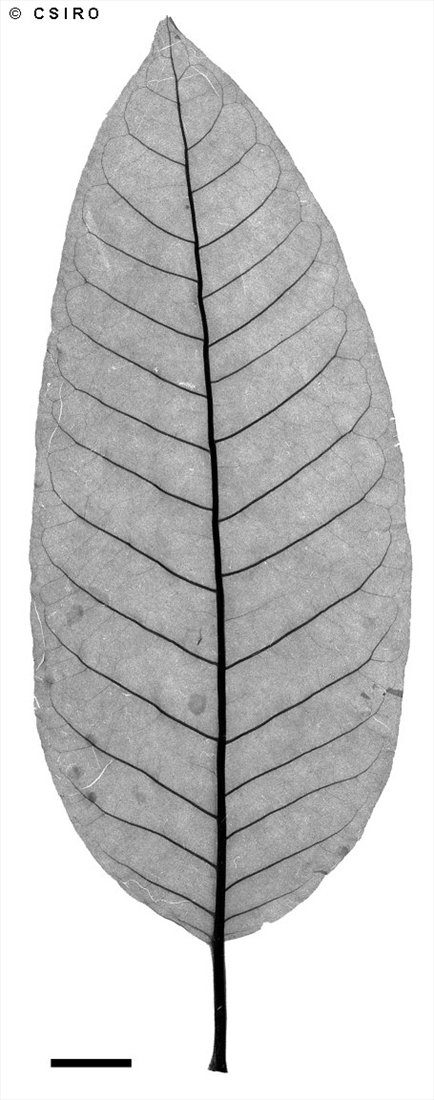Australian Tropical Rainforest Plants - Online edition
Harungana madagascariensis Lam. ex Poir.




Lamarck, J.B.A.P. de Monnet de in Lamarck, J.B.A.P. de Monnet de & Poiret, J.L.M. (1796) Tableau Encyclopedique et Methodique 4(1): t. 645. Type: Madagascar.
Harungana; Haronga
Bark exudate orange.
Cotyledons broadly spathulate, margins marked with dark 'oil' glands, petioles relatively long and slender. At the tenth leaf stage: 'oil' glands very dark, visible in transmitted light and on the underside of the leaf blade; terminal bud densely clothed in tortuous rusty brown hairs. Seed germination time 20 days.
An introduced species, originally from Africa or Madagascar, now naturalised in the Harvey Creek, Babinda and Mirriwinni areas of NEQ. Altitudinal range from near sea level to about 100 m. This species has become quite common in disturbed coastal lowland rain forest and has the capacity to spread further. This species does not produce edible fruit and has no apparent use. The reasons for its introduction into Australia are not obvious.
This species can be a troublesome weed in lowland areas in NEQ. The reasons for its introduction have never been obvious. It does not have any obvious horticultural merit as both the flowers and fruits are small and the timber has no obvious merit. The plant grows in an area where other plants with a Madagascan origin appear to have become naturalised. The precise point of introduction may have been Frenchman Creek where a family from Mauritius settled in 1883. Harungana madagascariensis does have medicinal properties (American Botanical Council hhplus.com/HN/HE/haronga.htm 16-8-2000) & (EMMANUEL ASUQUO OBOT and GABRIEL OGAR (1996) (www.earthwatch.org/europe/limbe/upbd.html 16-8-2000)).





